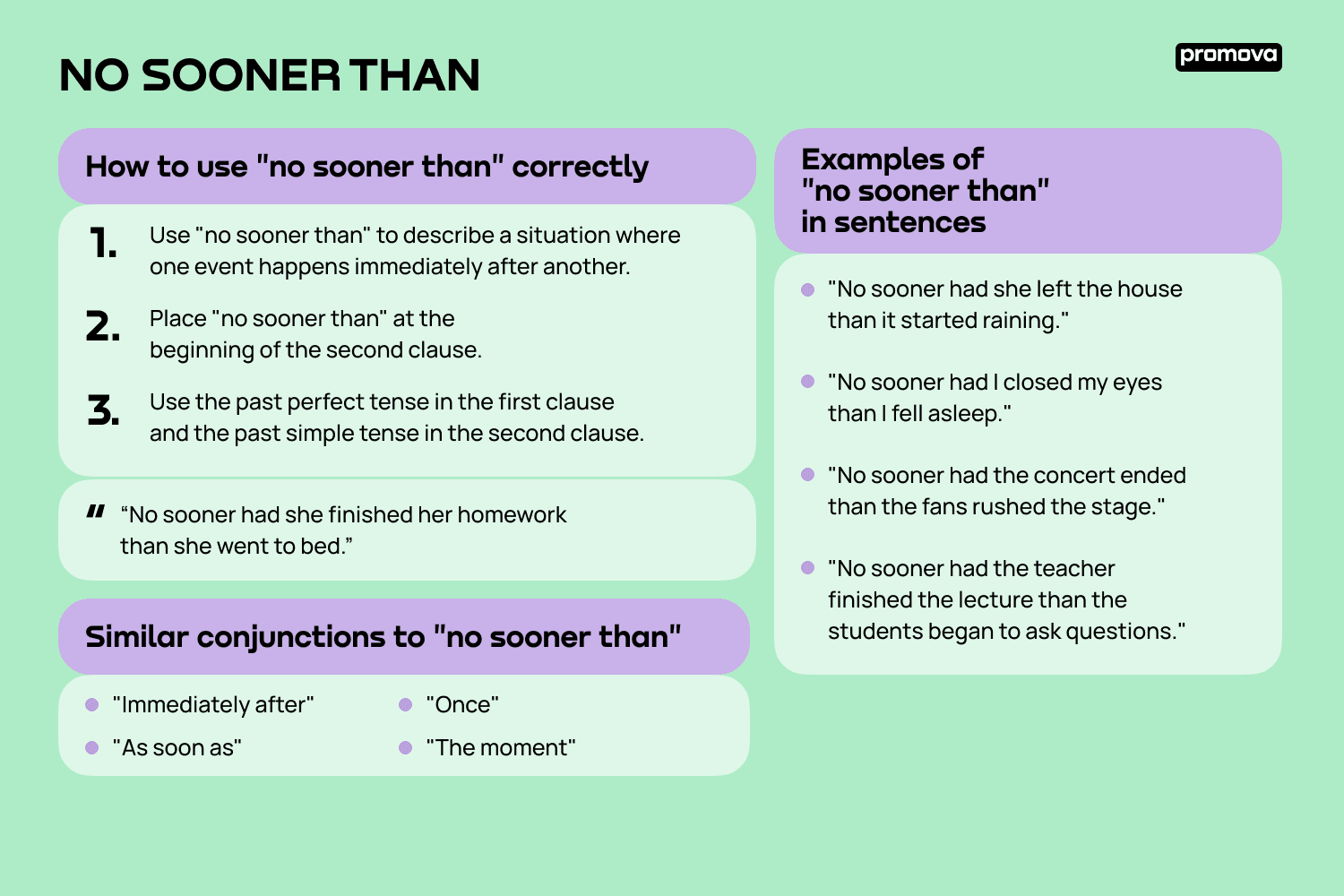NO SOONER THAN
Contents
In this reference, we will explore the meaning of "no sooner than," provide examples of how it is used in sentences, discuss the differences between "no sooner than" and "not until," and offer tips on how to use it correctly. Let's dive right in!
NO SOONER THAN Meaning
"No sooner than" is a conjunction used to indicate that one event happens immediately after another. It is used to describe a situation where one thing happens very quickly after another thing has just happened. The phrase "no sooner than" is often used to emphasize the immediacy of the second event.
For example: "No sooner had I finished my dinner than the phone rang." In this sentence, the phone rang immediately after the speaker finished their dinner. The phrase "no sooner than" emphasizes the quickness of the second event.
Examples of "no sooner than" in sentences
Here are a few more examples of "no sooner than" used in sentences:
- "No sooner had she left the house than it started raining."
- "No sooner had I closed my eyes than I fell asleep."
- "No sooner had the concert ended than the fans rushed the stage."
- "No sooner had the teacher finished the lecture than the students began to ask questions."
Differences between "no sooner than" and "not until"
While "no sooner than" and "not until" are similar in meaning, there is a subtle difference between the two phrases. "Not until" is used to indicate that one event will not happen until another event has occurred.
For example: "I won't leave the house until it stops raining."
In contrast, "no sooner than" is used to describe an immediate sequence of events.
For example: "No sooner had I left the house than it started raining."
Both phrases describe events that happen one after the other, but "no sooner than" emphasizes the immediacy of the second event, while "not until" emphasizes the requirement of the first event.
How to use "no sooner than" correctly
To use "no sooner than" correctly, you need to understand its meaning and how it is used in sentences. Tips to help you use "no sooner than" correctly:
- Use "no sooner than" to describe a situation where one event happens immediately after another.
- Place "no sooner than" at the beginning of the second clause.
- Use the past perfect tense in the first clause and the past simple tense in the second clause.
“No sooner had she finished her homework than she went to bed.”
2
Similar conjunctions to "no sooner than"
If you're looking for other conjunctions that have a similar meaning to "no sooner than," here are a few to consider:
- "Immediately after"
- "As soon as"
- "Once"
- "The moment"
While these conjunctions don't have the exact same meaning as "no sooner than," they all describe situations where one event happens immediately after another.

Summary
"No sooner than" is a conjunction used to describe a situation where one event happens immediately after another. It is important to use "no sooner than" correctly to emphasize the immediacy of the second event. Remember to place "no sooner than" at the beginning of the second clause and use the past perfect tense in the first clause and the past simple tense in the second clause. Be careful not to confuse "no sooner than" with "not until," which describes a delay between events.
Try using "no sooner than" in your own English and see how quickly it becomes a natural part of your speech!
Comments